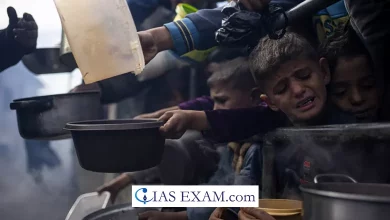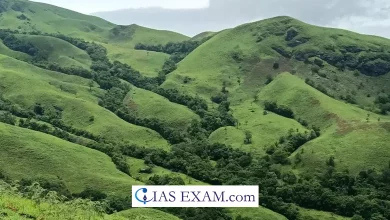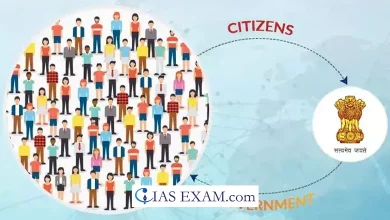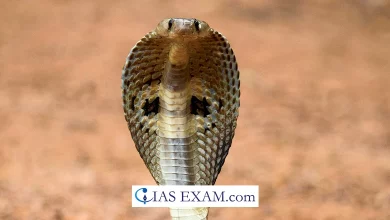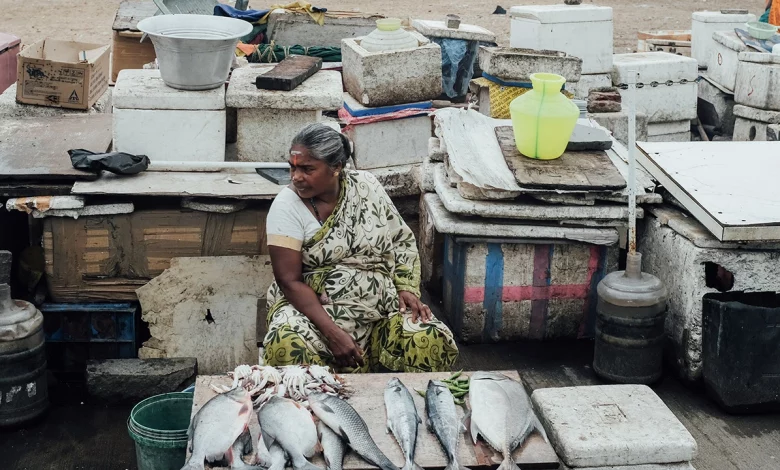
Context- Government’s Sagar Parikrama is a transformative excursion envisaged in the ocean across the beach front belt planning to determine the issues of the anglers and different partners and work with their financial upliftment through different government plans and projects, including PMMSY (Pradhan Mantri Matsya Sampada Yojana) and KCC (Kisan Charge card).
About Sagar Parikrama Initiative
- Sagar Parikrama’ program envisages to cover the maritime States/UTs in a phased manner. The journey began on March 5th, 2022, from Mandvi, Gujarat.
- The journey focuses on bridging the gaps in the expectations of fisher communities, developing fishing villages, and upgrading infrastructure such as fishing harbors and fish landing centers.
Phases of Sagar Parikrama:
- Phase I: The journey covered three locations in Gujarat – Mandavi, Okha-Dwarka, and Porbandar.
- Phase II: Seven locations were covered in Mangrol, Veraval, Diu, Jafrabad, Surat, Daman, and Valsad.
- Phase III: Coastal areas of northern Maharashtra, including Satpati, Vasai, Versova, New Ferry Wharf (Bhaucha Dhakka), and Sasson Dock in Mumbai, were part of this phase.
- Phase IV: Udupi and Dakshina Kannada districts in Karnataka were covered during this phase.
- Upcoming Phase V: Phase V of Sagar Parikrama will cover six locations: Raigad, Ratnagiri, and Sindhudurg Districts in Maharashtra, and Vasco, Maorugoa, and Canacona in Goa.
- Maharashtra, with its extensive coastline of 720 km, has immense untapped potential in the fisheries sector.
- The state ranks 7th in fish production in the country, with marine fisheries contributing 82% and inland fisheries 18%.
- Goa, with a coastline of 104 km, also plays a vital role in the marine fishery sector, providing livelihoods to many.
What is the Status of the Fisheries Sector in India?
- As the third-largest fish producer and the second-largest aquaculture producer globally, India recognizes the significance of the fisheries and aquaculture industry.
- The Indian Blue Revolution has led to a major improvement in the fishing and aquaculture industries. The industries are regarded as sunrise sectors and are anticipated to have a big impact on the Indian economy.
- In the recent past, Indian fisheries has witnessed a paradigm shift from marine dominated fisheries to inland fisheries, with the latter emerging as a major contributor of fish production from 36% in the mid-1980 to 70% in the recent past.
- The fish production reached an all-time high of 16.25 MMT during FY 2021-22 with marine exports touching Rs. 57,586 Crores.
Top Delivering States:
- Andhra Pradesh is the biggest maker of fish in India followed by West Bengal.
Present Obstacles:
- Unlawful, Unreported, and Unregulated (IUU) fishing: IUU fishing intensifies overfishing and subverts the maintainability of the area.
- Fishing without a permit, using prohibited gear, and not following catch limits are all examples of IUU fishing. Feeble observing and observation frameworks make it hard to actually battle this issue.
- Lacking Foundation and Innovation: The sector’s productivity and efficiency are harmed by outdated fishing vessels, gear, and processing facilities. Post-harvest losses are caused by inadequate transportation and cold storage infrastructure.
- Restricted admittance to current fishing innovation, like fish locaters and GPS route frameworks, limits the capacity to find fish stocks precisely.
- Degradation of the Environment and Climate Change: Increasing ocean temperatures, sea fermentation, and changing flows significantly affect marine biological systems and fish populaces.
- Changes in the distribution of fish, decreased productivity, and increased disease susceptibility are all consequences of climate change. Marine ecosystems are further degraded by coastal development, habitat destruction, and pollution.
- Financial Issues: The fisheries area in India is portrayed by countless limited scope and high quality fishers who face various financial difficulties.
- The vulnerability of fishing communities is exacerbated by factors like low incomes, inaccessibility to credit and insurance, and inadequate social security policies.
- Additionally, difficulties arise as a result of gender disparities and women’s marginalization in fishing.
- Market Access and Worth Chain Shortcomings: India produces a lot of fish, but it has trouble getting into domestic and international markets.
- Fishermen’s profitability decreases as a result of poor post-harvest handling, limited value addition, and inadequate market connections.
Way Forward
- Embrace Aquaponics: This framework takes into consideration the concurrent development of fish and plants, using fish squander as a supplement hotspot for plant development.
- Aquaponics makes use of less water, increases land productivity, and gives fish farmers another way to make money.
- Enhance the infrastructure of the cold chain: To reduce post-harvest losses and maintain the quality of fish products, the cold chain infrastructure must be improved.
- Additionally, well-equipped fish collection centers must be established close to coastal areas and integrated with cutting-edge storage, transportation, and processing facilities.
- Fish will be able to be efficiently preserved and distributed as a result, lowering the risk of spoilage and raising their value on the market.
- Encourage Diversification and Value Added: To boost their income, encourage fish farmers to participate in activities that add value. Give preparing and monetary help to fish handling, bundling, and marking.
- Encourage the creation of novel fish-based products like ready-to-eat snacks, fish oil supplements, fish leather, and products made of collagen. This will grow the market with amazing open doors and improve the value chain.





.png)
